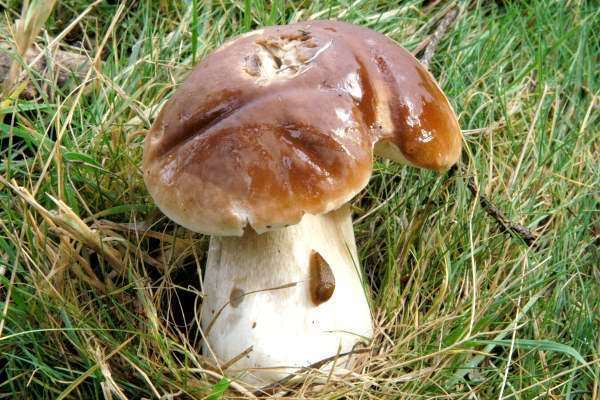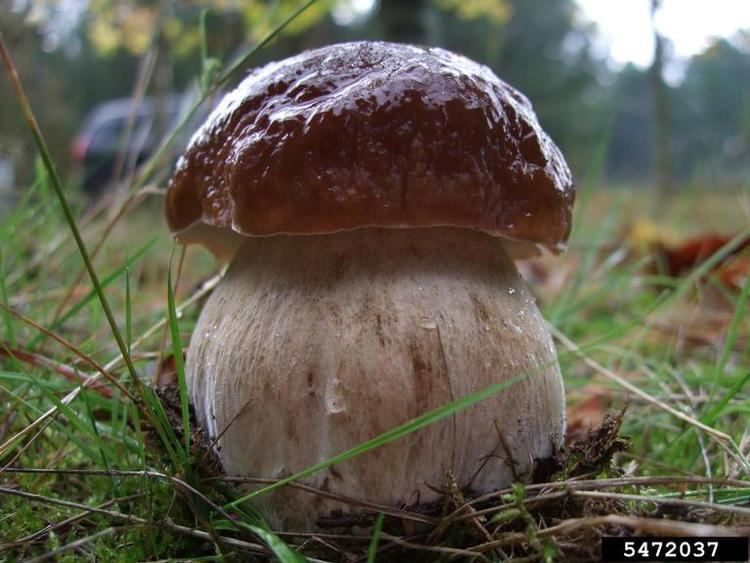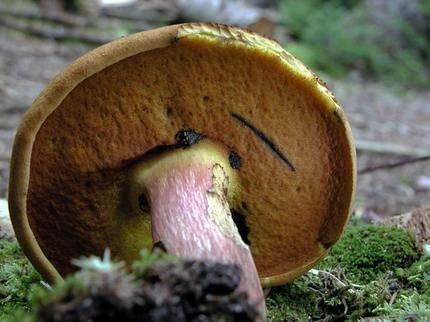Kingdom Fungi Higher classification Boletales | Division Basidiomycota Scientific name Boletaceae Rank Family | |
 | ||
Lower classifications | ||
Boletaceae fungi kingdom
The Boletaceae are a family of mushrooms, primarily characterized by developing their spores in small pores on the underside of the mushroom, instead of gills, as are found in agarics. Nearly as widely distributed as agarics, they include the Cep or King Bolete (Boletus edulis), much sought after by mushroom hunters. As a whole, the typical members of the family are commonly known as boletes.
Contents
- Boletaceae fungi kingdom
- Orange cap boletus boletaceae boletus edulis
- Description
- Taxonomy
- Genera
- Distribution
- Edibility
- References

Boletes are a relatively safe group of mushrooms for human consumption, as none are known to be deadly to adults, and they are some of the most sought after fungi for mushroom hunting. They are especially suitable for novice mushroom hunters, since there is little danger of confusing them with deadly mushrooms, like various Amanita agarics, which are the most poisonous mushrooms in the world. Some boletes are toxic, but those are not easily confused with the most popular edible ones. Boletes are easily distinguished from agarics, and easily recognized for colour, pores and thick stems and caps.

Orange cap boletus boletaceae boletus edulis
Description

Most species in Boletaceae produce large fleshy mushrooms with a central stipe. The spore print colours are commonly olivaceous (yellowish-green), yellowish, brownish, or vinaceous (red-wine coloured). In many species, flesh that is bruised or cut will turn blue, a result of the oxidation of pulvinic acid derivatives, like variegatic, xerocomic, and atrotomentinic acid. The mushrooms usually have tubular hymenophores, although some species (like those in the genus Phylloporus) are lamellate.
Taxonomy
Boletaceae were first described by the French botanist François Fulgis Chevallier in 1826 as a family distinct from Agaricaceae. Five genera were included in Chevallier's circumscription: Boletus, Cladoporus (now synonymous with Laetiporus), Physisporus (now Perenniporia), Polyporus, and Fistulina.
Genera
Rolf Singer, in the 4th edition (1986) of his Agaricales in Modern Taxonomy, included 26 genera and 415 species in the Boletaceae. Molecular phylogenetic studies of the 2000s have revised the concept of the family; in a highly cited 2006 publication, Manfred Binder and David Hibbett included 38 genera. Even after recent changes in classification that have moved many members out of the Boletaceae, it remains a large family with many genera. According to the Dictionary of the Fungi (10th edition, 2008), 35 genera are recognized in Boletaceae, which collectively contain 787 species. In the comprehensive work of Wu et al.(2014), seven major clades at subfamily level and 59 generic lineages were uncovered, including four new subfamilies (Austroboletoideae, Chalciporoideae, Leccinoideae, and Zangioideae) and 22 new potential genera. Several new genera have since been described.
Many other genera formerly part of this family have been moved into other, smaller families as work with molecular phylogeny shows that they are more distantly related, even if physically similar. Representative of this adjustment is the move of the slimy-capped genus Suillus to Suillaceae.
Distribution
Boletes are found worldwide, on every continent except Antarctica. Well-known and well-described in the temperate latitudes in the northern hemisphere, newer research has shown significant diversity in tropical and southern hemisphere regions as well. E. J. H. Corner found evidence of at least 60 species on the island of Singapore alone. In 1972 he described 140 species from the Malay Peninsula and Borneo and estimated there were an equal number again to be found.
Similar statements about the biodiverse richness of Australian Boletaceae have also been made.
Edibility
Many of the boletes are considered to be true culinary delicacies, especially the king bolete (Boletus edulis); the Scandinavian cuisine praises boletes. In Finnish cuisine, the king bolete is universally considered to be the tastiest culinary mushroom. A large number of boletes are delicious or at least edible. Poisonous or otherwise inedible species do exist, however, such as the unpalatable bitter species Boletus calopus and the aptly named bitter bolete (Tylopilus felleus) with a taste compared to bile, and some orange-capped species of Leccinum. As the bitter bolete resembles somewhat the king bolete, it can produce literally a bitter disappointment to the mushroom hunter. The rule of thumb is that the bitter bolete has pink pores, and a brownish stipe with a dark brown (sometimes approaching black) reticulum, while the cep has whitish pale grey, occasionally cream-colored to cream-colored with faint green tones, pore surface, a light-colored (white and/or similar in color to the rest of the stipe) reticulum and white hyphae tufts at the base of the stipe. If confused, the most simple solution is to taste a small amount of cap context. If the taster detects a strong, foul bitter taste immediately or near immediately, it is Tylopilus felleus, unless, of course, the taster lacks the necessary genes to detect the chemical responsible for the bitter taste. They also grow in different habitats. The bitter bolete lacks the stuffed or plugged pore appearance (caused by a hyphal mat of cheilocystidia) that is common in the cep and allies. The peppery bolete (Chalciporus piperatus) has extremely strong taste, and has been used in place of pepper.
Finnish cuisine uses boletes for various soups, sauces, casseroles, and hotpots. They are sometimes also used as pizza filling, not unlike champignons, shiitake, or portobellos.
Two of the best common edible boletes, however, are the bay bolete (Boletus badius), whose pores bruise blue-green, and the orange birch bolete, which is a Leccinum with an orange cap and which bruises a bluish grey.
Several guidebooks recommend avoiding all red-pored boletes, but both B. erythropus and Suillellus luridus are edible when well-cooked. One instance of death from Boletus pulcherrimus was reported in 1994; a couple developed gastrointestinal symptoms after eating this fungus with the husband succumbing. An autopsy revealed infarction of the midgut. Boletus satanas has also long considered to be poisonous, though it has not been responsible for any deaths. The symptoms are predominantly gastrointestinal in nature. A glycoprotein, bolesatine, has been isolated. A similar compound, bolevenine, has been isolated from the poisonous Neoboletus venenatus of Japan.
